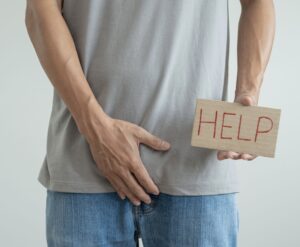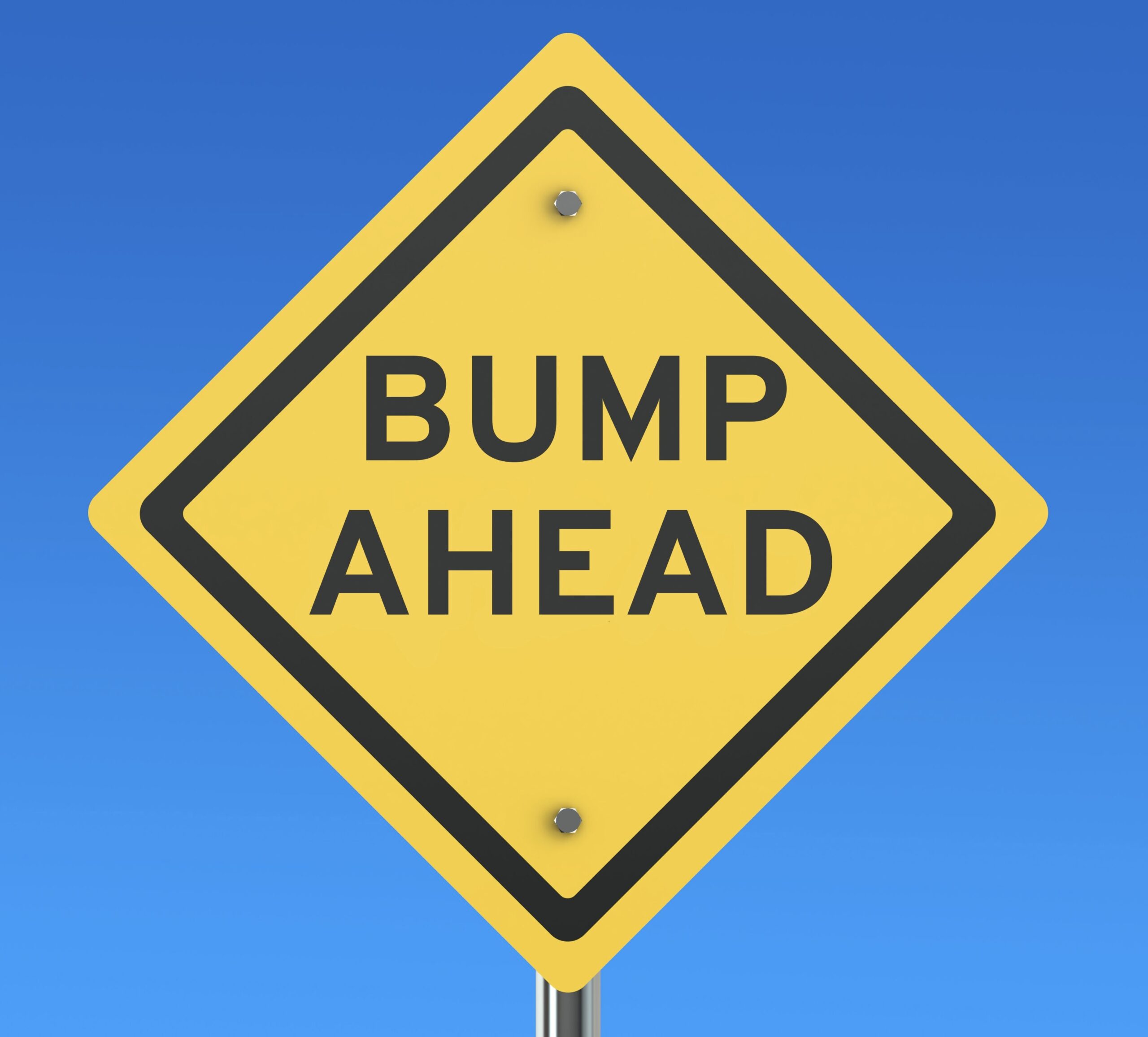 If you have painful scrotal lumps after vasectomy you are probably wondering what the hell is causing them? If so then you are not alone.
If you have painful scrotal lumps after vasectomy you are probably wondering what the hell is causing them? If so then you are not alone.
Developing a painful scrotal lump is a risk of vasectomy. Thankfully it is not a common risk.
It is rare to have a serious complication from vasectomy… especially a minimally invasive vasectomy procedure like the His Choice No Scalpel Vasectomy.
Many patients worry about pain during vasectomy or the possibility of having a painful lump.
Most vasectomy providers are less concerned about painful scrotal lumps after vasectomy and more concerned about patients having a scrotal hematoma or developing chronic scrotal pain. These complications are not only more common, but they can cause significant issues for patients when recovering from vasectomy procedures.
Scrotal hematoma. This is a complication caused by having bleeding inside your scrotum within the first 24 hours of the procedure. This blood would form a large blood clot that is painful and may take months to resolve. A scrotal hematoma will cause pain until it resolves… treatment is not always required but it will take time to go away. How much time…weeks to months!
Chronic scrotal pain. This is a rare complication but it is difficult to treat. Chronic scrotal pain may cause pain for a long time and require a multitude of treatments. In some patients chronic scrotal pain may never fully resolve.
Developing painful scrotal lumps after vasectomy is probably more common than either a hematoma or chronic pain. The reality is most patients will never notice these small lumps and most of the symptoms caused by the lumps will gradually resolve with time.
How common are scrotal lumps after vasectomy?
Non-painful scrotal lumps can occur in 1 out of 4 vasectomy patients. The key words are ‘non-painful’ and ‘common’. These lumps usually form within the first three months of the procedure and are usually a healing/inflammatory response.
Now…lets be clear. Any normal vasectomy site and any lump at a normal vasectomy site will be painful if you really ‘mash’ on it…so don’t mash on it. If you squeeze the lump repetitively…like many patients will do after vasectomy…then of course it will hurt. Anything you push on over and over again will hurt the longer you mash on it!
When we mention pain, we typically mean the lump is causing pain without being directly stimulated or with normal everyday movements, like walking or having sexual activity.
Patients will usually be concerned about these lumps when detected. Overtime these lumps will shrink in size and may go away completely. If they don’t go away then most patients are okay when they understand this can be normal after vasectomy healing in some patients.
Painful scrotal lumps can occur in approximately 1 out of 100 vasectomy patients. The key word is ‘painful’. Painful means causing discomfort/pain with normal everyday movements…not when you mash on it!
Most of these painful nodules will resolve over time. The chance of having a painful nodule that does not resolve and needs additional treatment may be about 1 out of every 2,500 procedures. These lumps are definitely concerning because they cause pain and dysfunction. Patients will usually contact their doctor when they experience such a complication after their procedure.
At first almost all scrotal lumps after vasectomy are tender or uncomfortable but with time these symptoms should resolve.
In some patients, the pain can linger. The diagnosis of a painful scrotal lump can only be made if both the lump and the pain lasts for six months or longer after a vasectomy procedure. These lumps may require additional medical treatment or surgical intervention.
Scrotal lumps are really ‘scrotal nodules’
The medical term for a lump or bump is ‘nodule’. The nodule can be as small as a pea…or as large as a garbanzo bean.
A nodule can form as a healing response after vasectomy. Nodules can form in one of two locations:
- Vas deferens tube (one side or both sides)
- Epididymis (either one side or both sides)
You will not form nodules in the scrotal skin or shaft of the penis. You will not form a nodule in the testicle. If you form a nodule after vasectomy it will be deep inside the scrotum and it will not be visible.
Lumps in the vas deferens. Nodule formation at the site of the vasectomy is usually from a normal healing, inflammatory response. The inflammation is in response to the cautery (burning) from the vasectomy procedure and/or exposure to sperm.
Healing nodules in the vas deferens usually present within the first 3 months of a vasectomy. The vasectomy site nodules usually shrink in size with the passage of time.
Lumps in the epididymis. Nodule formation in the epididymis always occur from sperm congestion in the lower end after vasectomy. The increased pressure in the lower end can cause a dilation, or an aneurysm, of a weakened section of the epididymal tubules. Technically these nodules are considered sperm granulomas.
Nodules in the epididymis usually form 3 months or more after vasectomy. It is possible epididymal nodules can form anytime within 3 years of having a vasectomy procedure. Usually these nodules present with a gradual increase in pain that reaches it peak for several days and then begins to slowly subside.
In many cases these spermatic granuloma nodules are a ‘normal’ healing response after vasectomy. In rare cases, the nodules could be persistently painful and may require additional medical or surgical treatment.
Are scrotal lumps normal after vasectomy?
A ‘normal lump’ is one that forms at the vasectomy site in the first 3 months of having the vasectomy procedure. A ‘normal lump’ can also be one that forms in the epididymis the first 12 months after a vasectomy procedure.
Any lump that shows up more than a year after vasectomy needs to be evaluated. The longer the time passes after your vasectomy then the less likely you are to develop a lump. These new lumps could be caused by something other than vasectomy.
Normal after vasectomy lumps show up the first several months immediately after the procedure. Usually they are larger and more uncomfortable at first, but over time the size of the lump and pain caused by the lump slowly decrease.
So small lumps within the first year can be entirely normal. Lumps that show up more than a year or lumps that are growing in size need to be evaluated by a medical professional.
Why do you get lumps after vasectomy?
Vasectomy site lumps. The lumps/nodules that form at the vasectomy sites are a healing response to vasectomy. The nodules are usually a combination of healing tissue and an inflammatory response to sperm.
Epididymis. The lumps/nodules that form in the epididymis are caused by a back up of sperm inside the epididymal tubules. This spermatic congestion increase the pressure in the epididymis. This increased pressure can cause an aneurysm in the weakened areas of the epididymal walls. This is when you would first detect a non-painful nodule in the epididymis.
If the weakened aneurysm begins to leak sperm into the surrounding tissues then the body will mount an immune/inflammatory response to the sperm. This is when the nodule starts to become painful. This is when these nodules are first detected by patients. Usually once the body heals itself the nodules will decrease in size and pain.
What is an abnormal lump after vasectomy?
Abnormal lumps after vasectomy are usually lumps that form 6 months or more after vasectomy. The longer it takes for the lump to show up then the more likely it is not related to vasectomy and it may be abnormal.
 An abnormal vasectomy nodule is any nodule that forms at the vasectomy site or in the vas deferens or the epididymis that is painful, persistent, and does not go away. These nodules typically cause pain with physical activity: lifting, sitting, running, sexual activity. Essentially, any activity that causes physical stimulation of the nodule will result in pain.
An abnormal vasectomy nodule is any nodule that forms at the vasectomy site or in the vas deferens or the epididymis that is painful, persistent, and does not go away. These nodules typically cause pain with physical activity: lifting, sitting, running, sexual activity. Essentially, any activity that causes physical stimulation of the nodule will result in pain.
Over the counter anti-inflammatory medications will not help with pain from an abnormal vasectomy nodule.
Nodules located inside the testicle sphere are not from vasectomy and need to be evaluated for possible malignancy (ie testicular cancer).
Normal nodules usually form within the first 6 months and are an adaptive healing response. Nodules that show up six months of more and increase and either pain or size need to be evaluated for malignancy or neuroma.
Persistently painful scrotal lump? Most likely a neuroma
If you have a ‘normal’ lump (nodule) the pain should completely resolve with time. The nodule size will also decrease with time but the reality is…even with a normal nodule…it may not completely go away.
Abnormal nodules do not decrease with time…either in size or painfulness.
In fact, the pain could get worse with the passage of time. This is usually because abnormal nerve endings are forming and becoming hypersensitive.
A nodule with hypersensitive nerve endings is called a ‘neuroma’.
Neuromas are not normal. They can cause significant pain and/or dysfunction which may require additional treatment. We estimate neuromas occur in approximately 1 out of every 2,500 patients.
Scrotal lumps after vasectomy: Normal vs abnormal
The testicle is the actual ‘ball’ or sphere located at the bottom of the scrotum (sac). Any new lump inside the testicle needs to be evaluated for cancer.
Any nodule inside the testicle is not normal after vasectomy. A vasectomy will never cause lumps, bumps, or nodules inside the actual testicle.
The epididymis is the soft “C” shaped, or banana shaped structure, that lies on the back of the testicle.
It is very common to form nodules in the epididymis after vasectomy from spermatic congestion and distention. Most vasectomy patients will commonly describe these nodules as being on the outside, back of, or on top of the testicle.
New and especially, growing, nodules inside the testicle (the actual ‘ball’) need to be evaluated for testicular cancer. These are not vasectomy related.
Normal scrotal lumps after vasectomy
- Develops within 3 months of vasectomy
- Size and pain decrease with time
- Firm fitting scrotal support and hot baths help with the pain
- Over the counter anti-inflammatory medications help with pain
The most important indicator of a ‘normal’ after vasectomy lump is over the counter ant-inflammatory medications (800 mg of ibuprofen or 550 mg of naproxen) greatly help with pain relief. This is because these lumps are mostly caused by the inflammatory response.
Treating inflammation helps to treat the pain. Inflammation treatment will not reduce the size of the lump…treatment only helps with pain and discomfort. The size of the lump will decrease over the next 12 months as the body ‘remodels’ the tissue.
Abnormal scrotal lumps after vasectomy
- Pain increases over time
- Over the counter anti-inflammatory medications help with pain
- Lumps or nodules inside the testicle are always abnormal
If the pain does not respond to over the counter anti-inflammatory medications then you probably have a neuroma.
Pain from neuromas are caused by hypersensitive nerve endings. Anti-inflammatory medications treat pain caused by the inflammatory response and these medications have minimal impact on pain generated by hypersensitive nerve endings.
Treatment for a painful scrotal lump after vasectomy
If the lump occurs within the first 12 months and the lump is not in the actual testicle then we recommend expectant management. Expectant management is the medical term for ‘Let’s wait and see!’
 Any nodule inside the testicle is not from vasectomy and needs to be evaluated for malignancy.
Any nodule inside the testicle is not from vasectomy and needs to be evaluated for malignancy.
We typically recommend firm scrotal support (jock strap or compression shorts or tight underwear) for lumps causing pain or discomfort.
We also recommend taking a hot bath at night. The warmth encourages increased blood flow to the scrotum and this may help to wash out prostaglandins which are released by the immune system and increase the sensitivity of nerve endings. We also recommend ibuprofen or naproxen anti-inflammatory medications.
If the above treatments help with discomfort then we consider the lumps a variation of the normal after vasectomy experience. We typically expect these lumps to get better with the passage of time.
If these treatments do not help then you could have a neuroma. Typically we do not recommend treatment within the first 12 months of having a vasectomy because most symptomatic nodules will improve with time. By waiting, we decrease unnecessary interventions which could prove more harmful than helpful.
If pain persists activities and causes problems with daily functions then we would recommend treatment with medication. If medications are not helpful then surgical removal of the painful lump may be indicated.
His Choice Vasectomy: A modern vasectomy technique!
It is common to form lumps after vasectomy. It is not common to form painful lumps after the procedure.
No matter which vasectomy technique is used, scrotal lumps after vasectomy can be considered a normal healing response.
Approximately 25% or 1 out of 4 patients will form a scrotal lump after a vasectomy procedure.
As long as the lump is not extremely painful and does not cause disruption to your daily life then treatment is not necessary.
Lumps that are painful, persistent, and cause pain not relieved by commonly available pain medications may be neuromas. Neuroma formation after vasectomy is not common and may require an individualized treatment plan.
If you are a His Choice vasectomy patient and believe you are experiencing a painful lump then we encourage you to contact us for further discussion.
Need more information? Visit: His Choice No Cut Vasectomy?

